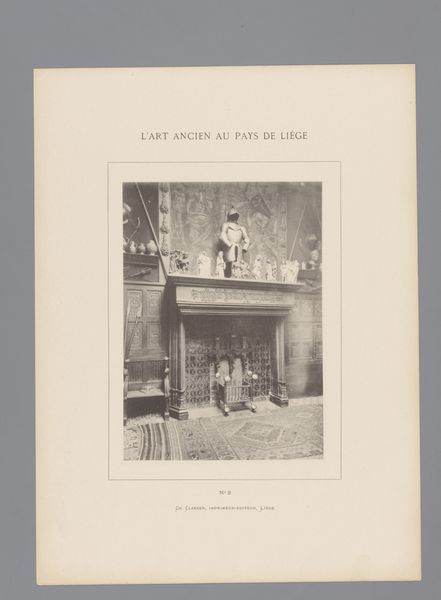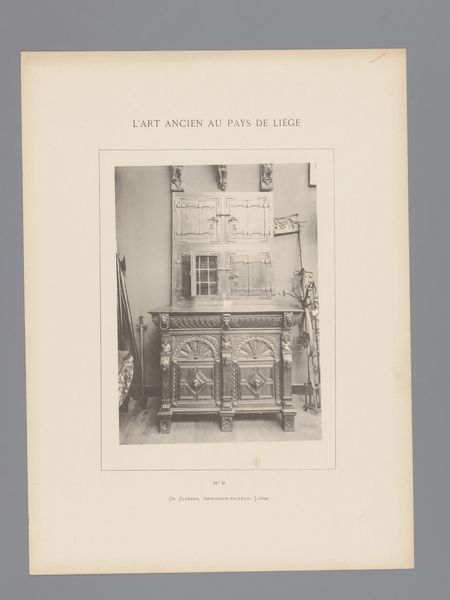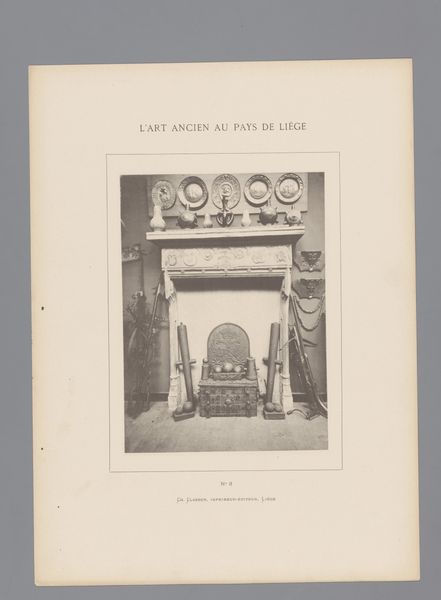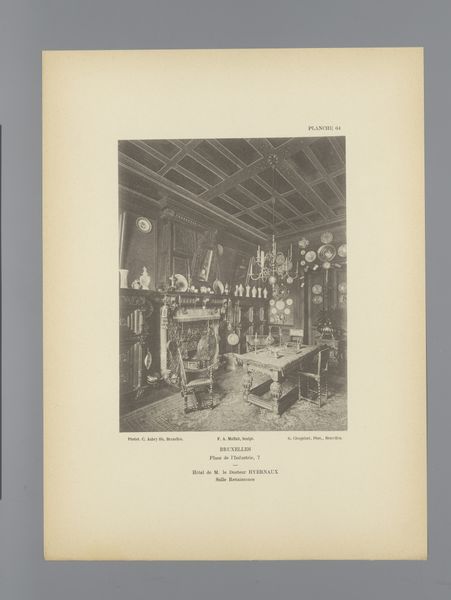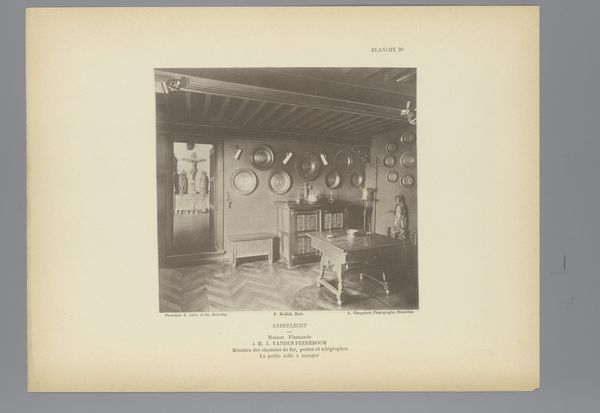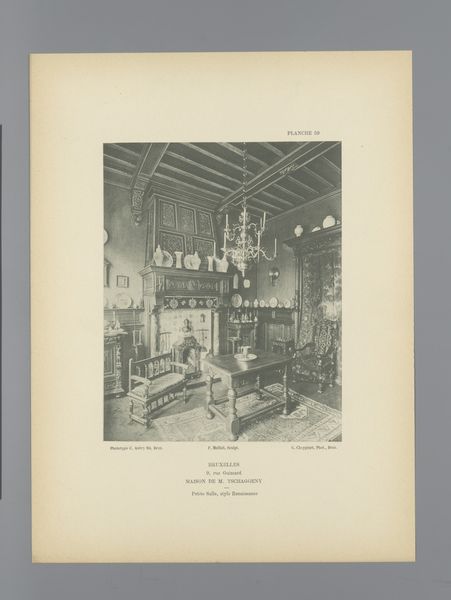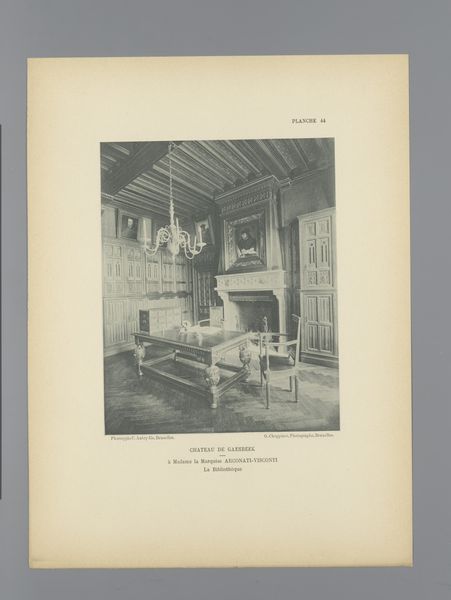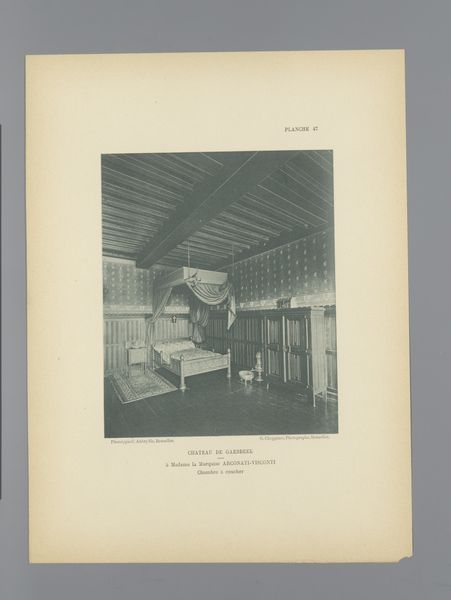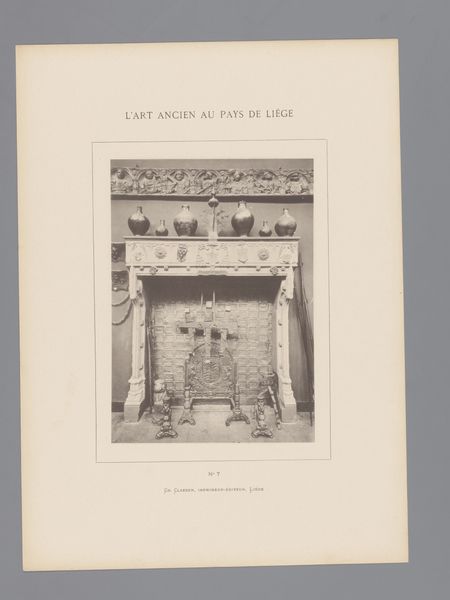
print, photography
# print
#
photography
#
intimism
#
genre-painting
Dimensions: height 214 mm, width 161 mm
Copyright: Rijks Museum: Open Domain
Curator: Here we have an image titled "Kamer met wandtapijten en een dressoir," meaning "Room with tapestries and a dresser," which we know dates to before 1884. It’s presented as a print derived from photography. Editor: It's wonderfully… stuffy. And ghostly, somehow. All those layers of textile and texture pressed into monochrome. The air itself feels heavy with unspoken stories. Curator: Indeed. Interiors, particularly of this period, often speak to a carefully constructed ideal of domesticity and prosperity. Tapestries themselves carry such weight—literal and figurative—don't they? Editor: Absolutely! Like memory palaces made manifest. Each woven thread, each repeated motif, whispers of tradition, aspiration, secrets, I imagine the room being a backdrop for hushed conversations or silent contemplation. All the surfaces cluttered with objects holding even more history. Curator: Precisely. The dresser, laden with what appear to be framed images or perhaps small sculptures, becomes a kind of altar to personal history, wouldn't you agree? Editor: Without a doubt! The whole composition feels deliberately arranged to evoke a certain mood. Like an early stage set designed for melancholy. I see glimpses of Pre-Raphaelite romance, with a dash of what I'd expect from Poe, if he tried interior design. The light falling across that carpet almost breathes! Curator: That interplay of light is critical, subtly animating the stillness and drawing the eye across these symbolic elements. Consider the role of light and shadow within these domestic interiors. What are your thoughts on that contrast in the context of the overall feeling that's evoked by this print? Editor: Hmmm...it casts the viewer as an interloper into a private realm frozen in time, and is just theatrical enough to border on slightly voyeuristic! Maybe the story this piece is telling us is more of a reflection of where we place ourselves when we view the space. It begs to ask the questions we project. It may speak as much about the history of spaces, but how we connect to them as well. Curator: Beautifully said. It offers an excellent reminder to approach these pieces not just as historical documents, but as potential mirrors reflecting our own present moment back at us. Editor: Thanks! Yes, it will sit with me for a bit, for sure, wondering whose ghost really lingers.
Comments
No comments
Be the first to comment and join the conversation on the ultimate creative platform.
